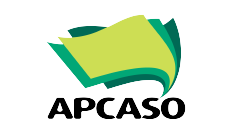
Building on some of the lessons from the experiences of community advocates in their engagements for the 2023-2025 Allocation Period, here are some practical steps to improve the push for CRG priorities in your next grant:
- Build evidence on your CRG priorities. The lack of strategic information about CRG-related issues and CRG-related needs of key and vulnerable populations reinforce the low prioritisation of interventions on human rights and gender equality in disease programs. Strategic information is likewise more challenging in the context of key populations and hard-to-reach populations: sex workers who use drugs, for example, whose behaviours and legal status expose them to greater vulnerabilities to HIV infections, or in the context of malaria, mobile migrant populations whose citizenship rights are questioned. One effective approach is to conduct a needs assessment with different stakeholders to map out your own CRG priorities, and use the results to conduct interventions prior to grant applications or push their inclusion in the grant itself.
- Identify your goals and develop your strategies. With your CRG priorities in mind, going through community processes to define how these priorities could be achieved is important. This will also help shape your engagement strategies for the grant application. Some important points to consider include making sure that CRG issues are not just included in the narrative of the application but are included as operationalised and costed interventions or activities; whether you’re going to push for community groups as implementers (as Principal Recipients or Sub-Recipients), and if not, how do you ensure that key population networks, communities, and civil society are in the implementation design; and how do you access up-to-date information needed for your engagement and for the funding application itself.
- Map out your stakeholders. This includes identifying decision-makers that have a say in funding applications, from CCM members to country disease programmes and the health minister. Note that it is a Global Fund eligibility requirement for CCMs to have key populations, civil society, and people living with the disease as members of the body, and that funding application and grant implementation processes have to be inclusive of communities, key populations, and civil society. Read: Not familiar about your Country Coordinating Mechanism? Read our CCM 101 here.
- Reach out to others and build collaborations. Allies are important in ensuring the full inclusion of interventions for key populations, human rights, and gender equality in disease programmes. Despite Global Fund policies and processes that emphasise on the importance of CRG priorities, CRG-related programmes could still fall out at different stages of the funding process, and working with others can help ensure that they are not deprioritised. There’s benefit, too, in collaborating with stakeholders from other diseases, especially if there are overlapping CRG issues.
- Identify gaps and challenges and address them early on. The gaps and challenges facing key populations, communities, and civil society in taking part in processes to develop country disease programmes, whether via Global Fund grants or country-specific processes, or in engaging in the broader disease response have to be dealt with in a programmatic and strategic manner. Identifying them and knowing what technical assistance is needed are crucial to address these gaps and challenges. The APCRG Platform has a TA Programme specific to CRG, but there are also resources from regional HIV key population networks and from development organisations like UNAIDS and the World Health Organization.
- Use existing guidelines and resources. For funding applications, the Global Fund, with the support technical partners like UNDP and UNAIDS, has technical guidelines, guidance notes, and other resources available such as Gender Equity Technical Brief and Resilient and Sustainable Systems for Health Information Note. The APCRG Platform will be condensing some of this information to make it more friendly to civil society and key and vulnerable populations who intend to engage with the Global Fund process in their respective countries.
Examples of CRG-related interventions and activities

Here are some examples of specific CRG-related interventions and activities that may integrated into funding requests. This is not exhaustive, but it presents an indicative set of activities for CRG-related interventions.
Community-based strategic information
Activities:
- Development of key population mapping tools
- Mapping exercises to identify key population community groups
- Development of database of key population organisations
Sample Indicators: Mapping tools developed and validated; mapping exercises conducted; and database developed and utilised.
Community-based monitoring of health services
Activities:
- Review of literature on community-inclusive or community-based health services
- Development and planning for community-based monitoring mechanisms
- Development of research plans
- Implementation of monitoring activities (baseline research, FGDs, survey of clients, etc.)
Sample indicators: Review of literature conducted: monitoring mechanisms develops and monitoring activities planned and costed; research plan developed; and Monitoring activities conducted and documented.
Policy advocacy
Activities:
- Policy review
- Consultations with stakeholders
- Implementation of advocacy events (campaigns, letter-writings, meetings, etc.)
- Community participation in policy decision-making activities
Sample indicators: Review conducted, and report and recommendations validated and disseminated; advocacy activities conducted and documented; # community advocates who participated in policy-making processes
Community capacity building
- Assessment of community needs in organisational development, human resources, leadership, skills, etc.
- Provision of basic institutional support (for example, to meet legal and registration requirements)
- Development of governance documents
- Direct subsidy for organisation running cost
- Conduct of organisational development trainings
Sample indicators: Needs assessment conducted, with recommendations developed into a capacity building plan; # of organisations provided with basic institutional support; governance documents developed and disseminated; # of organisations provided with running cost subsidy; and organisational development trainings conducted.
